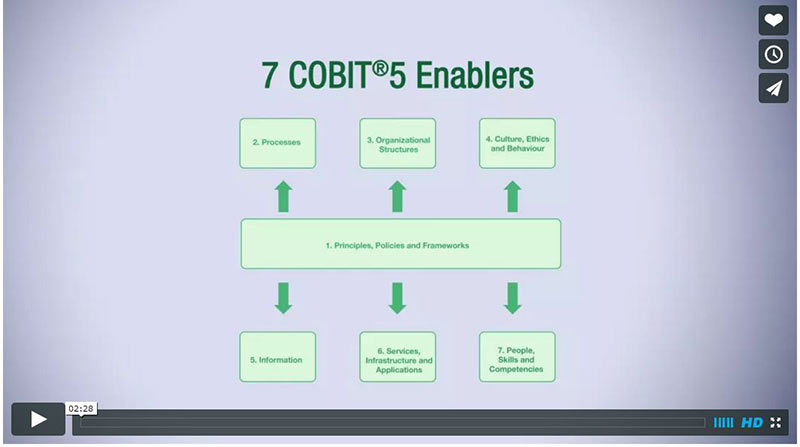The 7 COBIT enablers (principles, policies and frameworks, processes organizational structures, culture, ethics and behaviour, information services, infrastructure and applications, people, skills and competencies) are all described by a common structure which helps us both understand and use the enabler in practice.
All enablers consist of 2 major areas – enabler dimensions and enabler performance management.
The structural portion of the enabler, enabler dimensions, provides a common, simple and structured way to deal with enablers, allows an entity to manage its complex interactions and facilitates successful outcomes of the enablers while the second structural portion, the enabler performance management, supports the positive outcomes expected from the application and practical use of enablers.
Looking at the two major structures of the enabler we see that the first part, the enabler dimensions, consists of 4 individual dimensions – stakeholders, goals, lifecycle and good practices. We’ll be looking at the detail of the enabler dimension is another video.
The second of the 2 structures consists of 4 questions which are used to identify and measure the achievement of goals (or lag indicators) and the application of practice (lead indicators). The four questions are:
- Are stakeholder needs addressed?
- Are enabler goals achieved?
- Is the enabler life cycle managed?
- Are good practices applied?
The first two bullets deal with the actual outcome of the enabler, and the metrics used to measure the extent to which the goals are achieved can be called ‘lag indicators’. The last two bullets deal with the actual functioning of the enabler itself, and metrics for this can be called ‘lead indicators’.
COBIT® 5 is a registered trademark of ISACA in the United States and other countries. ISACA neither supports nor endorses these videos.




.png)


